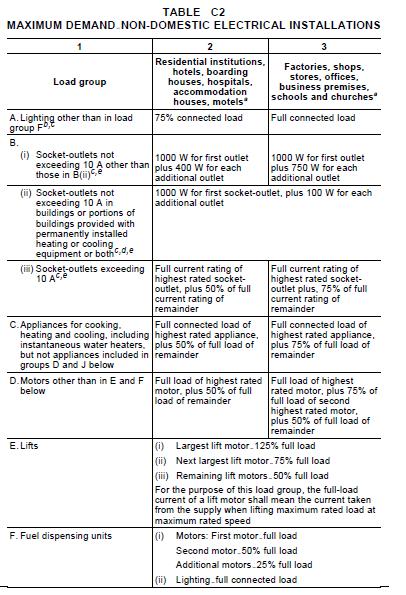MAXIMUM DEMAND
Maximum demand is the maximum current which the consumers mains or submain conductors can carry for a sustained period without overheating. The maximum demand is not necessarily the sum of all the loads in an electrical installation. Diversity is applied in determining maximum demand on the basis that all loads may not operate at the same time or for sustained periods.
AS3000 clause 2.2.2 explains that there are four ways to determine maximum demand .
(a) Calculation The maximum demand may be calculated in accordance with the guidance given in Appendix C (Table C1 fo domestic and C2 for commercial & industrial)
(b) Assessment The maximum demand may be assessed where—
(i) the electrical equipment operates under conditions of fluctuating or intermittent loading, or a definite duty cycle; or
(ii) the electrical installation is large and complex; or
(iii) special types of occupancy exist.
(c) Measurement The maximum demand may be determined by the highest rate of consumption of electricity recorded or sustained over any 15 min period or periods when demand is at its highest by a maximum demand indicator or recorder.
(d) Limitation The maximum demand may be determined by the current rating of a fixed setting circuit-breaker, or by the load setting of an adjustable circuit-breaker.
Calculation is a common question within the electrical mechanics capstone test.
![]() Table C1 calculation of domestic & C2 for commercial/industrial maximum demand.
Table C1 calculation of domestic & C2 for commercial/industrial maximum demand.


Click here for an example of a maxiumum demand calculation.